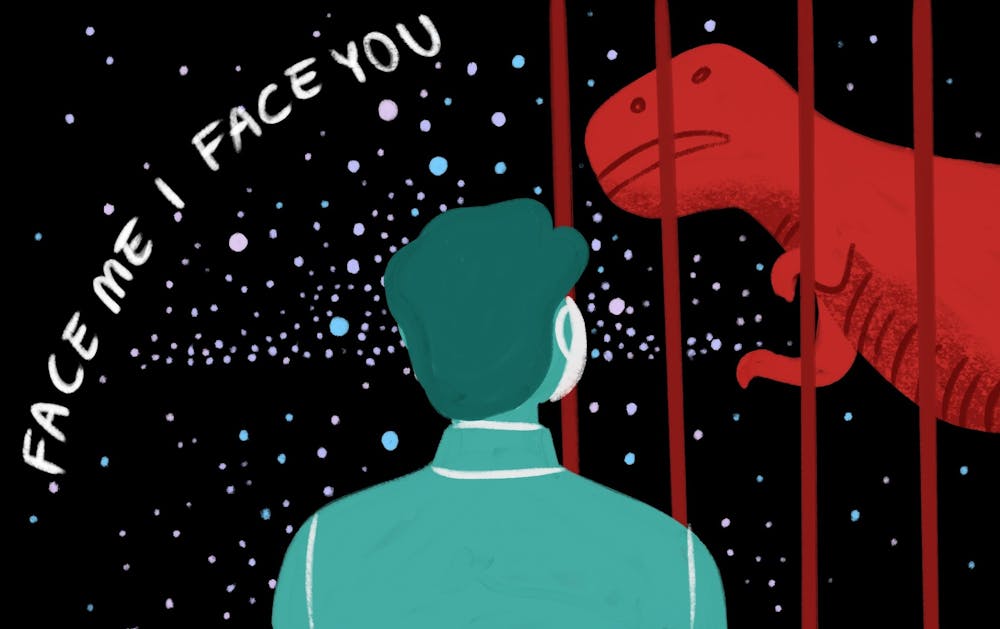On March 15, I worked what I feared could be my last shift at the Phoenix Art Museum. The following day, the museum announced it would be shutting its doors for the next few months due to the COVID-19 pandemic.
Until that time, I worked at the museum for about a year and a half. It had become a part of my college life. I worked around art and dealt with the occasional rowdy patron for four days a week. I worked every First Friday for over a year, worked countless late-night events and made unforgettable memories and friends there.
I saw coworkers come and go. We usually threw a themed party for whoever was leaving based on whatever they were off to do next.
One of my closest friends left for the air force, and so we decorated the break room with jets and printed out pieces of paper with instructions to fold into an airplane. I hoped when my time there came to an end, I might get a similar party thrown to send me off.
Instead, I was laid off with the rest of the gallery attendants, over 60 people regularly working. We did not get a party or a card; we got an email following our final paycheck.
Nearly seven months later, the museum reopened. I was rehired as one of six regular employees. The rest of the gallery attendants are a mix of new and returning ASU work-study employees.
My usual routine feels more than rusty, having not worked there in over half a year. I have to unearth those files from a cabinet in my mind I had thought would be shut for good. It’s made a little more difficult by some of the changes implemented in my time away.
The biggest change, outside of mask requirements at all times, is how we communicate with other gallery attendants while we’re on the floor. Before, we used to use radios for everything, from the smallest question to the most significant emergency.
Now we have iPads where we use Slack to take care of all the minor stuff, and the radio is saved only for what’s necessary. It’s an efficient and easy change, but it makes the museum feel a lot quieter, especially in these two weeks that have been reserved for museum members before the public reopening on Oct. 14.
I will always miss my favorite radio moment when a patron asked a gallery attendant about our new Ansel Adams photography exhibit and whether there would be a lecture about the artist. Like a game of telephone, the gallery attendant relayed the question as to whether there would be an artist talk, meaning if the artist would come to speak.
A senior gallery attendant responded after an awkward pause, saying, “I think he’s dead.”
A big part of what makes the museum such an enjoyable job is the diverse workforce. My coworkers ranged from retired people filling their time to young artists making ends meet to students studying art-related fields. Now the museum is filled with work-study students, among whom nearly every major is covered.
Over half of the current gallery attendants are new hires, which makes coming back like the first day of school in a new town with all the unfamiliar faces and voices. I have no doubt they are all very interesting, but it does make me miss the myriad of people I knew and the range of stories they could tell.
The invisible but ever-present elephant in the room is COVID-19. Unlike my previous job at a grocery store, the museum has implemented precautions, and we are expected to enforce them; this includes capacity limits, social distancing and mask requirements.
READ MORE: Insight: Working in a grocery store in a pandemic
Employees all receive temperature checks the moment they walk in the door and do not have to jump through hoops to stay home when sick.
The most significant unknown variable is the patrons, as there is only so much we can do in enforcing our policies, particularly when more people start entering the museum.
So far, I have already had an anti-masker experience, in which I was shouted at and told what I was doing was illegal after just asking someone to wear their mask over their nose. I fully expect more moments like that, and, while it’s a shame, every instance is at least one less person to worry about for the rest of the day and the foreseeable future.
I can say I feel much safer in the museum than I ever did working in the grocery store. It is reassuring that I am not taking extra precautions out of my own concern but am being recommended and provided those precautions.
It takes massive stress off of my shoulders every weekend to feel supported and validated in maintaining my concern when I have to go to work.
Overall, I am elated to return to the museum. It makes me nostalgic for the time before while also grounding me during these stressful times. Seeing all of my favorite pieces again, like “El Capitan and Bridal Veil Falls,” or “Desert Rain God” or “You Who Are Getting Obliterated In The Dancing Swarm of Fireflies,” gives me joy.
It is thrilling to finally explore the new exhibitions set to open days after the museum closed. Seeing some of my old friends come back reminds me of what socializing used to be like, and sometimes I forget I’m working in the middle of a pandemic.
Reach the reporter at rknappen@asu.edu and follow @RyanKnappenber3 on Twitter.
Like The State Press on Facebook and follow @statepress on Twitter.




